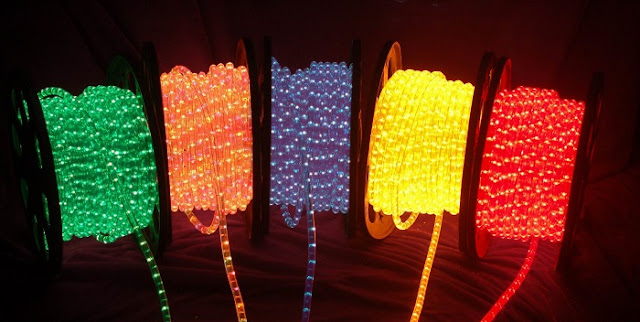How Much Do LED Strip Lights Cost? Exploring LED Strip Lights Price Range
The top priority for everyone nowadays is to reduce energy consumption. To achieve this, we strongly suggest making the switch to LED lights.
However, you might wonder how these LED light sources fare in comparison to traditional bulbs. In the past, conventional bulbs were considerably more expensive, causing homeowners to bear a higher cost per kilowatt of energy. Hence, the question arises: what is the cost of running LEDs?
>>> See more Best Led Light Strip To Buy BLLS
How Much Is The Average Light Bill?
Determining the average light bill in the UK can be influenced by various factors as energy costs are subject to constant fluctuations based on supplier prices and household-specific variables.
Several aspects can impact your monthly energy usage, such as the size and energy efficiency of your home, the number of occupants, and the energy efficiency of your appliances and their usage frequency.
Ofgem, in an effort to assist households, has provided statistics detailing the typical domestic consumption of UK households, categorized by home type and number of residents:
- Low energy use: Flat or 1-bedroom house with 1-2 people typically consumes around 8,000 kWh of gas and 1,800 kWh of electricity annually.
- Medium energy use: 2-3 bedroom house with 2-3 people typically consumes about 12,000 kWh of gas and 2,900 kWh of electricity annually.
- High energy use: 4+ bedroom home with 4-5 people typically consumes approximately 17,000 kWh of gas and 4,300 kWh of electricity annually.
Notably, as the number of residents in a household increases, so does the typical annual electricity consumption.
However, these figures do not account for specific appliances and lighting usage. Energy consumption is measured in kilowatt-hours (kWh), where 1 kWh can power a 100-watt lightbulb for ten hours.
Ofgem also provides examples of energy use for specific appliances:
- Fridge-Freezer: Approximately 1 kWh used in 26 hours.
- Electric Oven: Around 2 kWh used in 30 minutes of operation.
- Tumble Dryer: Approximately 4.5 kWh used in a single cycle.
With these diverse elements influencing your energy usage, it's essential to consider how lighting contributes to your monthly energy bill.
Are LED Lights Expensive To Run In The UK?
Do LED lights prove to be costly in terms of running expenses in the UK? It's crucial to assess the running costs of LED lights before making the switch.
In this regard, we rely on data from the reputable light specialists, KAV London, to present a comparison of LED lights with three other common light sources: incandescent, halogen, and CFL bulbs. Here is the comparison:
Incandescent
- Power: 60 watts
- Lumens: 800
- Life: 750 hours
- Energy Costs Per Year: £8.76
Halogen
- Power: 50 watts
- Lumens: 800
- Life: 1500 hours
- Energy Costs Per Year: £7.30
CFL
- Power: 15 watts
- Lumens: 800
- Life: 10,000 hours
- Energy Costs Per Year: £2.19
LED
- Power: 6.5 watts
- Lumens: 800
- Life: 50,000 hours
- Energy Costs Per Year: £0.95
From the data, it's evident that an incandescent bulb requires 60 watts to produce 800 lumens of light, whereas an LED light accomplishes the same with only 6.5 watts, saving a remarkable 53.5 watts!
Calculating The Running Costs Of LED Lights
If you're keen to determine the energy expenses of operating LED lights in your household, follow this simple calculation:
Energy Cost = kW x hours of use x electricity cost per kWh
To illustrate, let's consider the Leyton Lighting Dover Pendant Ceiling Light, an elegant and energy-efficient product offered by Light Supplier. The LED bulb used in this light fixture has a wattage of 60 watts.
Keep in mind that there are 1000 watts in one kilowatt-hour (kWh) of energy. For instance, if you have and utilize four Dover Pendant Ceiling Lights, each rated at 6 watts (totaling 24 watts), they will consume 0.24 kWh of electricity.
Next, estimate the number of hours per day you use these lights. For this example, let's assume 10 hours of daily usage.
Lastly, find out your electricity supplier's charge per kWh. For this illustration, we'll consider the UK's average tariff of £0.34 per kWh, according to The Energy Savings Trust.
0.24 kWh x 10 hours x £0.34 = £0.81
Thus, running four Dover Pendant Ceiling Lights for 10 hours per day would cost approximately £0.81, based on the national average electricity costs.
Choose Light Supplier for Energy-Efficient LEDs
Having discovered the running costs of LED lights, why not start saving money today? Light Supplier specializes in cost-effective LED light bulbs that are not only energy-efficient but also modern, stylish, and suitable for various types of homes.
Reduce your monthly and annual expenses with Light Supplier's industry-leading LEDs and experience the difference for yourself. Make the switch to energy-efficient lighting and enjoy long-term savings while enhancing your living space.
Conclude
In conclusion, the cost of LED strip lights can vary based on factors such as brand, length, features, and additional accessories. While initial prices might be higher compared to traditional lighting options, the long-term benefits of LED strip lights are undeniable.
These energy-efficient and versatile lighting solutions not only provide vibrant illumination but also contribute to significant savings on electricity bills over time.






Nhận xét
Đăng nhận xét